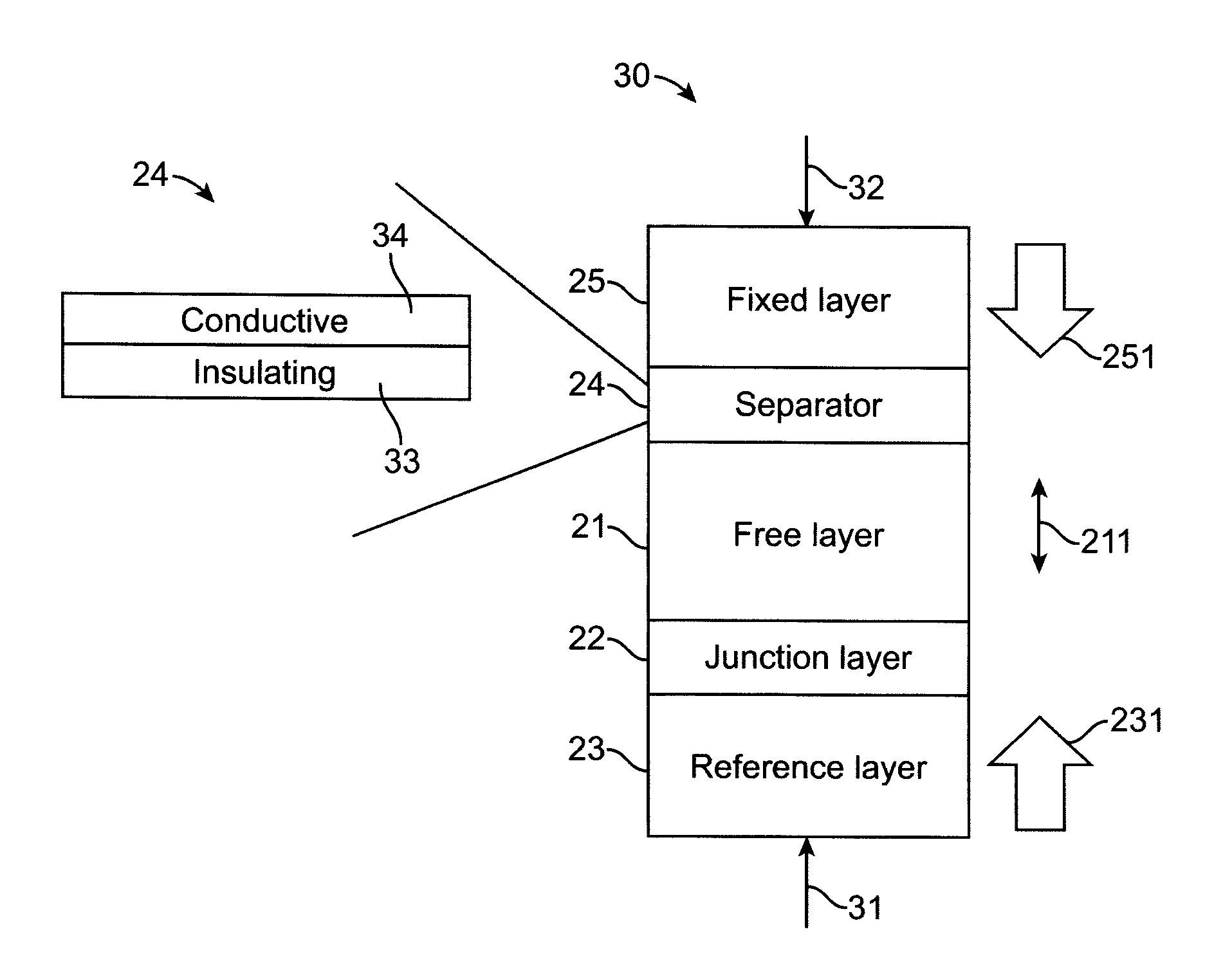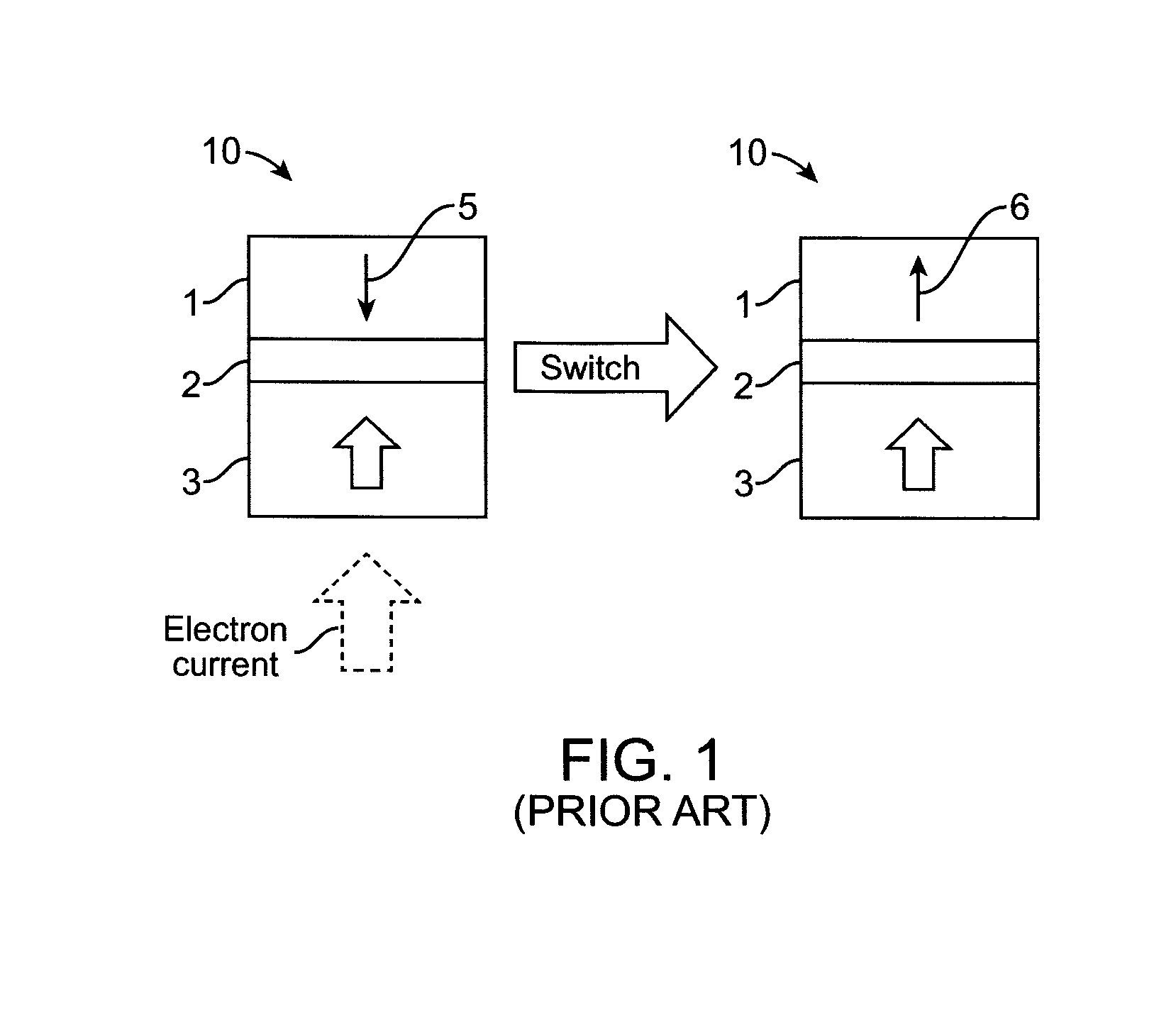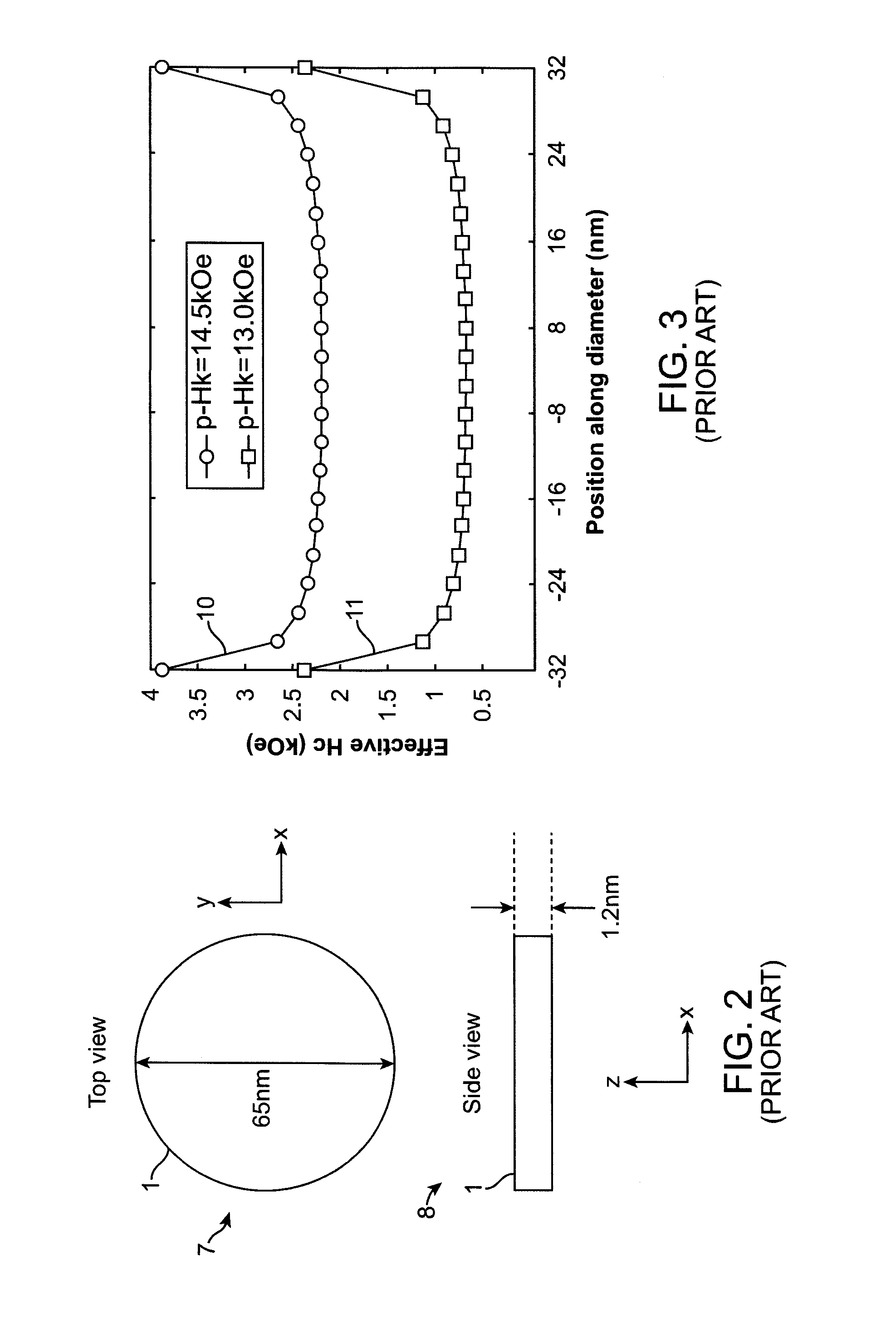Perpendicular sttmram device with balanced reference layer
a reference layer and parallel sttmram technology, applied in the field of magnetic memory elements, can solve the problems of preventing the advancement of the use of mtjs, the current and threshold voltage requirements are currently too high to allow practical applications of spin torque transfer based mtj, and the effect of lowering the effective h
- Summary
- Abstract
- Description
- Claims
- Application Information
AI Technical Summary
Benefits of technology
Problems solved by technology
Method used
Image
Examples
example 1
[0101]the second reference sublayer 504 formed of repeated base pairs of Co / Pt, or Co / Pd, or Co / Ni super-lattice structure with the FCC lattice;[0102]the coupling layer 506 formed of Ta with a thickness range of about 0.3 nm to about 0.8 nm;[0103]the first reference sublayer 503 formed of a CoFeB alloy and having an interface layer with the BCC lattice structure next to the junction layer 502;[0104]the junction layer 502 formed of MgO with a cubic lattice structure;[0105]the magnetic free layer 501 formed of a CoFeB alloy and having an interface layer with the BCC lattice structure next to the junction layer 502;[0106]the tuning layer 507 formed of Ta with a thickness range of about 2 nm or thicker; and[0107]the magnetic pinned layer 505 formed of repeated base pairs of Co / Pt, or Co / Pd, or Co / Ni super-lattice structure with the FCC lattice.
example 2
[0108]the second reference sublayer 504 formed of repeated base pairs of Co / Pt, or Co / Pd, or Co / Ni super-lattice structure with the FCC lattice;[0109]the coupling layer 506 formed of Ta with a thickness of about 2 nm or thicker;[0110]the first reference sublayer 503 formed of a CoFeB alloy and having an interface layer with the BCC lattice structure next to the junction layer 502;[0111]the junction layer 502 formed of MgO with a cubic lattice structure;[0112]the magnetic free layer 501 formed of a CoFeB alloy and having an interface layer with the BCC lattice structure next to the junction layer 502;[0113]the tuning layer 507 formed of Ta with a thickness range of about 2 nm or thicker; and[0114]the magnetic pinned layer 505 formed of repeated base pairs of Co / Pt, or Co / Pd, or Co / Ni super-lattice structure with the FCC lattice.
example 3
[0115]the second reference sublayer 504 formed of repeated base pairs of Co / Pt, or Co / Pd, or Co / Ni super-lattice structure with the FCC lattice;[0116]the coupling layer 506 formed of Ta with a thickness range of about 0.3 nm to about 0.8 nm;[0117]the first reference sublayer 503 formed of a CoFeB alloy and having an interface layer with the BCC lattice structure next to the junction layer 502;[0118]the junction layer 502 formed of MgO with a cubic lattice structure;[0119]the magnetic free layer 501 formed of a CoFeB alloy and having an interface layer with the BCC lattice structure next to the junction layer 502;[0120]the tuning layer 507 having a MgO / CoFeB / Ta structure, where the MgO layer with a thickness range of about 0.5 nm to about 1.1 nm is formed adjacent to the magnetic free layer 501; the CoFeB layer has a thickness range of about 0.2 nm to 0.6 nm; and the Ta layer with a thickness range of about 2 nm to about 3 nm is formed adjacent to the magnetic pinned layer 505; and[0...
PUM
 Login to View More
Login to View More Abstract
Description
Claims
Application Information
 Login to View More
Login to View More - R&D
- Intellectual Property
- Life Sciences
- Materials
- Tech Scout
- Unparalleled Data Quality
- Higher Quality Content
- 60% Fewer Hallucinations
Browse by: Latest US Patents, China's latest patents, Technical Efficacy Thesaurus, Application Domain, Technology Topic, Popular Technical Reports.
© 2025 PatSnap. All rights reserved.Legal|Privacy policy|Modern Slavery Act Transparency Statement|Sitemap|About US| Contact US: help@patsnap.com



